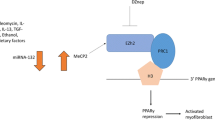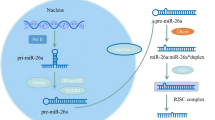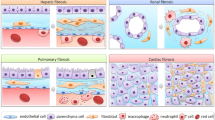Abstract
The involvement of microRNAs in human pathologies is firmly established. Accordingly, the pharmacological modulation of microRNA activity appears to be a very interesting approach in the development of new types of drugs (miRNA therapeutics). One important research area is the possible development of miRNA therapeutics in the field of rare diseases. In this respect, appealing molecules are based on peptide nucleic acids (PNAs), displaying, in their first description, a pseudo-peptide backbone composed of N-(2-aminoethyl)glycine units, and found to be excellent candidates for antisense and antigene therapies. The aim of the present article is to describe methods for determining the activity of PNAs designed to target microRNAs involved in cystic fibrosis, using as model system miR-145-5p and its target cystic fibrosis transmembrane conductance regulator (CFTR) mRNA. The methods employed to study the effects of PNAs targeting miR-145-5p are presented here by discussing data obtained using as cellular model system the human lung epithelial Calu-3 cell line.
Access this chapter
Tax calculation will be finalised at checkout
Purchases are for personal use only
Similar content being viewed by others
Abbreviations
- 3′UTR:
-
3′-Untranslated region
- CF:
-
Cystic fibrosis
- CFTR:
-
Cystic fibrosis transmembrane conductance regulator
- EDTA:
-
Ethylenediaminetetraacetic acid
- FBS:
-
Fetal bovine serum
- HRP:
-
Horseradish peroxidase
- miRNA:
-
MicroRNA
- PBS:
-
Phosphate-buffered saline
- PNA:
-
Peptide nucleic acid
- RISC:
-
RNA-induced silencing complex
- RT-qPCR:
-
Reverse transcription-quantitative polymerase chain reaction
- SDS:
-
Sodium dodecyl sulfate
- TBS:
-
Tris-buffered saline
References
He L, Hannon GJ (2010) MicroRNAs: small RNAs with a big role in gene regulation. Nat Rev Genet 5:522–531
Lim LP, Lau NC, Garrett-Engele P, Grimson A, Schelter JM, Castle J et al (2005) Microarray analysis shows that some microRNAs downregulate large numbers of target mRNAs. Nature 433:769–773
Monga I, Kumar M (2019) Computational resources for prediction and analysis of functional miRNA and their targetome. Methods Mol Biol 1912:215–250
Griffiths-Jones S (2004) The microRNA registry. Nucleic Acids Res 32:D109–D111
Filipowicz W, Jaskiewicz L, Kolb FA, Pillai RS (2005) Post-transcriptional gene silencing by siRNAs and miRNAs. Curr Opin Struct Biol 15:331–341
Saliminejad K, Khorram Khorshid HR, Soleymani Fard S, Ghaffari SH (2019) An overview of microRNAs: biology, functions, therapeutics, and analysis methods. J Cell Physiol 234:5451–5465
Kwok GT, Zhao JT, Weiss J, Mugridge N, Brahmbhatt H, MacDiarmid JA et al (2017) Translational applications of microRNAs in cancer, and therapeutic implications. Noncoding RNA Res 2:143–150
Laina A, Gatsiou A, Georgiopoulos G, Stamatelopoulos K, Stellos K (2018) RNA therapeutics in cardiovascular precision medicine. Front Physiol 9:953
Nakano M, Nakajima M (2018) Current knowledge of microRNA-mediated regulation of drug metabolism in humans. Expert Opin Drug Metab Toxicol 14:493–504
Lima JF, Cerqueira L, Figueiredo C, Oliveira C, Azevedo NF (2018) Anti-miRNA oligonucleotides: a comprehensive guide for design. RNA Biol 15:338–352
Anthiya S, Griveau A, Loussouarn C, Baril P, Garnett M, Issartel JP, Garcion E (2018) MicroRNA-based drugs for brain tumors. Trends Cancer 4:222–238
Obiols-Guardia A, Guil S (2017) The role of noncoding RNAs in neurodevelopmental disorders: the case of Rett syndrome. Adv Exp Med Biol 978:23–37
Finotti A, Fabbri E, Lampronti I, Gasparello J, Borgatti M, Gambari R (2019) MicroRNAs and long non-coding RNAs in genetic diseases. Mol Diagn Ther 23:155. https://doi.org/10.1007/s40291-018-0380-6
Mishra MK, Loro E, Sengupta K, Wilton SD, Khurana TS (2017) Functional improvement of dystrophic muscle by repression of utrophin: let-7c interaction. PLoS One 12:e0182676
Finotti A, Gambari R (2014) Recent trends for novel options in experimental biological therapy of β-thalassemia. Expert Opin Biol Ther 14:1443–1454
Gillen AE, Gosalia N, Leir SH, Harris A (2011) MicroRNA regulation of expression of the cystic fibrosis transmembrane conductance regulator gene. Biochem J 438:25–32
Hassan F, Nuovo GJ, Crawford M, Boyaka PN, Kirkby S, Nana-Sinkam SP, Cormet-Boyaka E (2012) MiR-101 and miR-144 regulate the expression of the CFTR chloride channel in the lung. PLoS One 7:e50837
Ramachandran S, Karp PH, Jiang P, Ostedgaard LS, Walz AE, Fisher JT et al (2012) A microRNA network regulates expression and biosynthesis of wild-type and DeltaF508 mutant cystic fibrosis transmembrane conductance regulator. Proc Natl Acad Sci U S A 109:13362–13367
Ramachandran S, Karp PH, Osterhaus SR, Jiang P, Wohlford-Lenane C, Lennox KA et al (2013) Post-transcriptional regulation of cystic fibrosis transmembrane conductance regulator expression and function by microRNAs. Am J Respir Cell Mol Biol 49:544–551
Oglesby IK, Chotirmall SH, McElvaney NG, Greene CM (2013) Regulation of cystic fibrosis transmembrane conductance regulator by microRNA-145, -223, and -494 is altered in ΔF508 cystic fibrosis airway epithelium. J Immunol 190:3354–3362
Dechecchi MC, Tamanini A, Cabrini G (2018) Molecular basis of cystic fibrosis: from bench to bedside. Ann Transl Med 6:334
Lutful Kabir F, Ambalavanan N, Liu G, Li P, Solomon GM, Lal CV et al (2018) MicroRNA-145 antagonism reverses TGF-β inhibition of F508del CFTR correction in airway epithelia. Am J Respir Crit Care Med 197:632–643
Nielsen PE, Egholm M, Berg RH, Buchardt O (1991) Sequence-selective recognition of DNA by strand displacement with a thymine-substituted polyamide. Science 254:1497–1500
Nielsen PE (2001) Targeting double stranded DNA with peptide nucleic acid (PNA). Curr Med Chem 8:545–550
Demidov VV, Potaman VN, Frank-Kamenetskii MD, Egholm M, Buchard O, Sönnichsen SH, Nielsen PE (1994) Stability of peptide nucleic acids in human serum and cellular extracts. Biochem Pharmacol 48:1310–1313
Egholm M, Buchardt O, Christensen L, Behrens C, Freier SM, Driver DA et al (1993) PNA hybridizes to complementary oligonucleotides obeying the Watson-Crick hydrogen-bonding rules. Nature 365:566–568
Nielsen PE (2010) Gene targeting and expression modulation by peptide nucleic acids (PNA). Curr Pharm Des 16:3118–3123
Shiraishi T, Hamzavi R, Nielsen PE (2008) Subnanomolar antisense activity of phosphonate-peptide nucleic acid (PNA) conjugates delivered by cationic lipids to HeLa cells. Nucleic Acids Res 36:4424–4432
Nekhotiaeva A, Awasthi SK, Nielsen PE, Good L (2004) Inhibition of Staphylococcus aureus gene expression and growth using antisense peptide nucleic acids. Mol Ther 10:652–659
Borgatti M, Lampronti I, Romanelli A, Pedone C, Saviano M, Bianchi N et al (2003) Transcription factor decoy molecules based on a peptide nucleic acid (PNA)-DNA chimera mimicking Sp1 binding sites. J Biol Chem 278:7500–7509
Gambari R (2001) Peptide-nucleic acids (PNAs): a tool for the development of gene expression modifiers. Curr Pharm Des 7:1839–1862
Rasmussen FW, Bendifallah N, Zachar V, Shiraishi T, Fink T, Ebbesen P et al (2006) Evaluation of transfection protocols for unmodified and modified peptide nucleic acid (PNA) oligomers. Oligonucleotides 16:43–57
Cortesi R, Mischiati C, Borgatti M, Breda L, Romanelli A, Saviano M et al (2004) Formulations for natural and peptide nucleic acids based on cationic polymeric submicron particles. AAPS J 6:10–21
Borgatti M, Breda L, Cortesi R, Nastruzzi C, Romanelli A, Saviano M et al (2002) Cationic liposomes as delivery systems for double-stranded PNA-DNA chimeras exhibiting decoy activity against NF-kappaB transcription factors. Biochem Pharmacol 64:609–616
Abes R, Arzumanov A, Moulton H, Abes S, Ivanova G (2008) Arginine-rich cell penetrating peptides: design, structure-activity, and applications to alter pre-mRNA splicing by steric-block oligonucleotides. J Pept Sci 14:455–460
Torres AG, Threlfall RN, Gait MJ (2011) Potent and sustained cellular inhibition of miR-122 by lysine-derivatized peptide nucleic acids (PNA) and phosphorothioate locked nucleic acid (LNA)/2′-O-methyl (OMe) mixmer anti-miRs in the absence of transfection agents. Artif DNA PNA XNA 2(3):71–78
Bertucci A, Prasetyanto EA, Septiadi D, Manicardi A, Brognara E, Gambari R, Corradini R, De Cola L (2015) Combined delivery of temozolomide and anti-miR221 PNA using mesoporous silica nanoparticles induces apoptosis in resistant glioma cells. Small 11:5687–5695
Chen J, Tang Y, Liu Y, Dou Y (2018) Nucleic acid-based therapeutics for pulmonary diseases. AAPS PharmSciTech 19:3670–3680
Gasparello J, Manicardi A, Casnati A, Corradini R, Gambari R, Finotti A, Sansone F (2019) Efficient cell penetration and delivery of peptide nucleic acids by an argininocalix[4]arene. Sci Rep, vol 9, p 3036
Brognara E, Fabbri E, Bazzoli E, Montagner G, Ghimenton C, Eccher A et al (2014) Uptake by human glioma cell lines and biological effects of a peptide-nucleic acids targeting miR-221. J Neurooncol 118:19–28
Brognara E, Fabbri E, Bianchi N, Finotti A, Corradini R, Gambari R (2014) Molecular methods for validation of the biological activity of peptide nucleic acids targeting microRNAs. Methods Mol Biol 1095:165–176
Cheng CJ, Bahal R, Babar IA, Pincus Z, Barrera F, Liu C et al (2015) MicroRNA silencing for cancer therapy targeted to the tumour microenvironment. Nature 518:107–110
Brognara E, Fabbri E, Montagner G, Gasparello J, Manicardi A, Corradini R et al (2016) High levels of apoptosis are induced in human glioma cell lines by co-administration of peptide nucleic acids targeting miR-221 and miR-222. Int J Oncol 48:1029–1038
Ghidini A, Bergquist H, Murtola M, Punga T, Zain R, Strömberg R (2016) Clamping of RNA with PNA enables targeting of microRNA. Org Biomol Chem 14:5210–5213
Beavers KR, Werfel TA, Shen T, Kavanaugh TE, Kilchrist KV, Mares JW et al (2016) Porous silicon and polymer nanocomposites for delivery of peptide nucleic acids as anti-microRNA therapies. Adv Mater 28:7984–7992
Gupta A, Quijano E, Liu Y, Bahal R, Scanlon SE, Song E et al (2017) Anti-tumor activity of miniPEG-γ-modified PNAs to inhibit microRNA-210 for cancer therapy. Mol Ther Nucleic Acids 9:111–119
Quijano E, Bahal R, Ricciardi A, Saltzman WM, Glazer PM (2017) Therapeutic peptide nucleic acids: principles, limitations, and opportunities. Yale J Biol Med 90:583–598
Manicardi A, Gambari R, de Cola L, Corradini R (2018) Preparation of anti-miR PNAs for drug development and nanomedicine. Methods Mol Biol 1811:49–63
Fabbri E, Tamanini A, Jakova T, Gasparello J, Manicardi A, Corradini R et al (2017) A peptide nucleic acid against microRNA miR-145-5p enhances the expression of the cystic fibrosis transmembrane conductance regulator (CFTR) in Calu-3 cells. Molecules 23(1). pii: E71
Manicardi A, Fabbri E, Tedeschi T, Sforza S, Bianchi N, Brognara E et al (2012) Cellular uptakes, biostabilities and anti-miR-210 activities of chiral arginine-PNAs in leukaemic K562 cells. Chembiochem 13:1327–1337
Fabbri E, Manicardi A, Tedeschi T, Sforza S, Bianchi N, Brognara E et al (2011) Modulation of the biological activity of microRNA-210 with peptide nucleic acids (PNAs). ChemMedChem 6:2192–2202
Bardin P, Sonneville F, Corvol H, Tabary O (2018) Emerging microRNA therapeutic approaches for cystic fibrosis. Front Pharmacol 9:1113
Dutta RK, Chinnapaiyan S, Rasmussen L, Raju SV, Unwalla HJA (2019) Neutralizing aptamer to TGFBR2 and miR-145 antagonism rescue cigarette smoke- and TGF-β-mediated CFTR expression. Mol Ther 27:442–455
Marzaro G, Lampronti I, D’Aversa E, Sacchetti G, Miolo G, Vaccarin C et al (2018) Design, synthesis and biological evaluation of novel trimethylangelicin analogues targeting nuclear factor kB (NF-kB). Eur J Med Chem 151:285–293
Laselva O, Marzaro G, Vaccarin C, Lampronti I, Tamanini A, Lippi G et al (2018) Molecular mechanism of action of trimethylangelicin derivatives as CFTR modulators. Front Pharmacol 9:719
Zarrilli F, Amato F, Morgillo CM, Pinto B, Santarpia G, Borbone N et al (2017) Peptide nucleic acids as miRNA target protectors for the treatment of cystic fibrosis. Molecules 22:E1144
Gambari R, Brognara E, Spandidos DA, Fabbri E (2016) Targeting oncomiRNAs and mimicking tumor suppressor miRNAs: new trends in the development of miRNA therapeutic strategies in oncology (Review). Int J Oncol 49:5–32
Nastruzzi C, Cortesi R, Esposito E, Gambari R, Borgatti M, Bianchi N et al (2000) Liposomes as carriers for DNA-PNA hybrids. J Control Release 68:237–249
Acknowledgments
This work was supported by Fondazione Fibrosi Cistica (FFC), Project “Revealing the microRNAs-transcription factors network in cystic fibrosis: from microRNA therapeutics to precision medicine (CF-miRNA-THER)” FFC#7/2018.
Author information
Authors and Affiliations
Corresponding author
Editor information
Editors and Affiliations
Rights and permissions
Copyright information
© 2020 Springer Science+Business Media, LLC, part of Springer Nature
About this protocol
Cite this protocol
Gambari, R., Gasparello, J., Fabbri, E., Borgatti, M., Tamanini, A., Finotti, A. (2020). Peptide Nucleic Acids for MicroRNA Targeting. In: Nielsen, P. (eds) Peptide Nucleic Acids. Methods in Molecular Biology, vol 2105. Humana, New York, NY. https://doi.org/10.1007/978-1-0716-0243-0_12
Download citation
DOI: https://doi.org/10.1007/978-1-0716-0243-0_12
Published:
Publisher Name: Humana, New York, NY
Print ISBN: 978-1-0716-0242-3
Online ISBN: 978-1-0716-0243-0
eBook Packages: Springer Protocols




